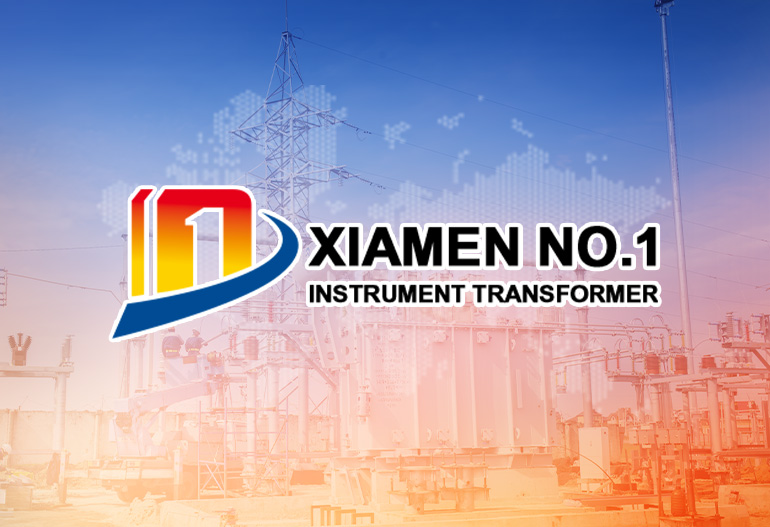
News
Current Transformer Accuracy Classes: What Do They Mean?
In the complex web of electrical power systems, current transformers (CTs) serve as critical intermediaries, translating high primary currents into manageable secondary values for measurement, protection, and control. Among the key specifications that define a CT’s performance, accuracy class stands out as a fundamental parameter, yet it remains widely misunderstood. This article demystifies CT accuracy classes, exploring their definitions, significance, testing standards, and practical implications for system design and operation.
Defining Accuracy Classes: Beyond Simple Precision
At its core, a current transformer’s accuracy class represents a standardized measure of its ability to reproduce the primary current as a proportional secondary current under specified conditions. Unlike a vague claim of “precision,” accuracy classes are rigorously defined by international standards, establishing clear limits for ratio error and phase displacement—the two primary metrics of CT performance.
Ratio error, expressed as a percentage, quantifies the difference between the actual transformation ratio and the nominal ratio. Mathematically, it is calculated as [(Kn × Is) – Ip] / Ip × 100%, where Kn is the nominal ratio, Is is the secondary current, and Ip is the primary current. A ratio error of +0.5% indicates that the secondary current reads 0.5% higher than the true value, while a -1% error means the measurement underestimates the primary current by 1%.
Phase displacement, measured in minutes of arc (where 60 minutes equal one degree), describes the angular difference between the primary current vector and the reversed secondary current vector. This parameter is particularly critical in power measurement applications, where phase relationships directly impact calculations of real and reactive power.
Together, these two metrics form the backbone of accuracy class specifications, providing engineers with a quantitative basis for selecting CTs suited to specific tasks.
International Standards: The Framework for Classification
Accuracy classes are not arbitrary; they are defined by globally recognized standards that ensure consistency across manufacturers and applications. The two most influential standards are IEC 61869 (International Electrotechnical Commission) and ANSI/IEEE C57.13 (American National Standards Institute/Institute of Electrical and Electronics Engineers), each with distinct approaches to classification.
IEC 61869-2, which governs current transformers, defines accuracy classes using a combination of numerical values and letters. For measuring purposes, common classes include 0.1, 0.2, 0.5, 1, and 3. These numerical designations correspond to maximum permissible ratio errors at rated current: ±0.1% for class 0.1, ±0.2% for class 0.2, and so on. Phase displacement limits also vary by class, with tighter tolerances for higher accuracy ratings (e.g., 5 minutes for class 0.1 versus 30 minutes for class 3 at rated current).
Notably, IEC standards also specify accuracy at other current levels, typically 10% and 120% of rated current, ensuring performance across a range of operating conditions. For example, a class 0.5 CT must maintain a ratio error of ±0.75% at 10% of rated current and ±0.5% at 120% of rated current.
ANSI/IEEE C57.13 takes a different approach, using accuracy classes such as 0.3, 0.6, and 1.2 for metering applications. These classes define maximum ratio error at 100% and 120% of rated current, with phase error specified in degrees rather than minutes. For instance, a class 0.3 CT allows a ratio error of ±0.3% at 100% rated current and ±0.45% at 120%, with a phase error of ±0.15 degrees.
Beyond measuring classes, both standards include classifications for protection CTs, which prioritize performance during fault conditions over precision at normal currents. IEC specifies protection classes like 5P and 10P, where the letter “P” denotes “protection” and the number indicates the maximum permissible composite error (a combination of ratio and phase errors) at 10 times rated current (e.g., 5P10 allows a 5% composite error at 10x rated current). ANSI uses classes such as C10 and T10, with the number representing the “accuracy limit factor”—the maximum multiple of rated current at which the CT remains accurate for protection purposes.
Accuracy Classes in Practice: Application-Specific Requirements
The choice of accuracy class is never arbitrary; it is dictated by the CT’s intended application. In metering and billing systems, where financial transactions depend on precise current measurements, high-accuracy classes (e.g., IEC 0.1, 0.2 or ANSI 0.3) are non-negotiable. A utility company using a class 1 CT for revenue metering, for example, could face significant financial losses due to cumulative measurement errors over time.
Industrial process monitoring, on the other hand, may accept lower accuracy classes (e.g., IEC 0.5 or 1) if the application tolerates minor discrepancies. For instance, monitoring current in a motor control circuit to prevent overloads typically requires less precision than billing a large industrial customer.
Protection systems present a unique set of demands. During faults, currents can surge to 20 times the rated value or more, and protection CTs must accurately reproduce these high currents to ensure relays operate correctly. Here, protection classes like 5P20 or C20 take precedence, as they guarantee accuracy at extreme currents—even if their performance at normal currents is less precise than metering classes. A mismatched protection CT could fail to detect a fault or trigger a false trip, with potentially catastrophic consequences for equipment and safety.
Notably, some CTs are designed to serve dual purposes, offering both measuring and protection classes. These “multi-ratio” CTs include separate secondary windings optimized for each function, ensuring metering accuracy under normal conditions and reliable protection during faults.
Factors Influencing Accuracy: Beyond the Class Rating
While accuracy classes provide a baseline for performance, several factors can affect a CT’s actual accuracy in operation. Understanding these variables is critical for ensuring that a CT performs as expected in its installed environment.
Burden—the total impedance of the secondary circuit, including wiring, relays, and meters—is perhaps the most significant factor. All accuracy class ratings are defined for a specific burden (e.g., 5 VA or 10 VA). Exceeding this burden increases voltage drop in the secondary circuit, leading to increased ratio error and phase displacement. A class 0.2 CT rated for 5 VA, for example, may degrade to class 0.5 performance if connected to a 10 VA burden.
Temperature also plays a role. Both high and low temperatures can alter the resistance of the CT’s windings and the magnetic properties of its core, affecting accuracy. Manufacturers typically specify accuracy limits for a temperature range (e.g., -25°C to +70°C), and engineers must account for environmental conditions in their selection.
Frequency variations, common in renewable energy systems with variable-speed generators, can impact accuracy by altering core losses and winding reactance. CTs designed for 50 Hz or 60 Hz operation may exhibit increased errors at frequencies outside their rated range.
Harmonic distortion, prevalent in systems with non-linear loads like variable frequency drives and rectifiers, poses another challenge. Standard accuracy classes are defined for sinusoidal currents, and harmonics can introduce additional errors, particularly in iron-core CTs prone to saturation at high harmonic frequencies.
Installation practices, including improper grounding, loose connections, and magnetic interference from adjacent conductors, can also degrade accuracy. Even a high-class CT will perform poorly if installed without attention to these details.
Testing and Verification: Ensuring Compliance
To confirm that a CT meets its specified accuracy class, manufacturers and third-party laboratories conduct rigorous testing. These tests are designed to replicate real-world conditions and validate performance across the operating range.
Ratio error and phase displacement are measured using a comparison method, where the CT under test is connected in parallel with a highly accurate “standard” CT. Both are energized with the same primary current, and their secondary outputs are compared using precision instruments. This process is repeated at multiple current levels (e.g., 10%, 100%, 120% of rated current) and burden values to verify compliance with the class requirements.
For protection CTs, short-time current tests assess the ability to withstand fault currents without damage or permanent accuracy degradation. These tests involve subjecting the CT to currents up to 20 times the rated value for a specified duration (typically 1 second) and measuring performance before and after to ensure stability.
Temperature rise tests verify that the CT operates within safe temperature limits under continuous load, preventing insulation degradation and accuracy loss due to overheating.
Field testing, while less precise than laboratory measurements, is also critical. Utilities and industrial users often perform periodic tests to detect drift in accuracy over time, caused by factors like core aging, insulation degradation, or mechanical damage.
Emerging Trends: Evolving Accuracy for Modern Grids
As power systems evolve toward smarter, more distributed networks, the demands on CT accuracy are changing. The rise of renewable energy sources, microgrids, and digital protection systems is driving the development of new CT designs and accuracy standards.
Digital current transformers (DCTs), which use optical or Hall-effect sensors instead of traditional iron cores, offer advantages in terms of frequency response and linearity, making them better suited for harmonic-rich environments. Their accuracy specifications often extend beyond traditional classes, with some models achieving 0.05% ratio error across a wide current range.
Wide-band CTs, designed to measure both fundamental and harmonic currents with high accuracy, are becoming essential in grids with high penetration of non-linear loads. These CTs typically include additional specifications for harmonic distortion, complementing the standard accuracy classes.
In smart grid applications, where real-time data is critical for monitoring and control, dynamic accuracy—performance during transient conditions like load changes and fault initiation—is gaining importance. New standards are emerging to address these dynamic requirements, supplementing the steady-state focus of traditional classes.
Conclusion: The Importance of Understanding Accuracy Classes
Current transformer accuracy classes are more than just numbers on a datasheet; they are a language that communicates performance expectations and ensures compatibility between components in a power system. For engineers, understanding these classes is essential for selecting the right CT for the job, avoiding costly errors, and ensuring the reliability and efficiency of electrical systems.
Whether designing a revenue metering system requiring 0.1 class accuracy or a protection scheme relying on 5P20 class CTs, the choice of accuracy class directly impacts system performance, safety, and economics. By considering not only the class rating but also the operating environment, burden, and installation practices, engineers can ensure that their CTs deliver the precision and reliability required.
As power systems continue to evolve, accuracy classes will adapt to new challenges and technologies, but their fundamental purpose—providing a clear, standardized measure of performance—will remain unchanged. In a world where electrical efficiency and reliability are increasingly critical, the humble current transformer and its accuracy class will continue to play a vital role.

XUJIA
I graduated from the University of Electronic Science and Technology, majoring in electric power engineering, proficient in high-voltage and low-voltage power transmission and transformation, smart grid and new energy grid-connected technology applications. With twenty years of experience in the electric power industry, I have rich experience in electric power design and construction inspection, and welcome technical discussions.

